At Pitti back in January, Shuhei Nishiguchi – menswear director at Beams – kindly gave me a copy of his book, ‘Nishiguchi’s Closet’.
I liked it immediately. It rationalised a lot of the outfits I’d seen him wearing over the years, breaking them down into small capsules – three coats, three blazers, two knits – and showing the various combinations they could make.
This kind of rationalisation appeals to me instinctively (I have that kind of mind) but I also found it made it easier for me to apply the outfits to my own wardrobe.
However, I was surprised to find that the book wasn’t available anywhere outside Japan. So a month ago I asked the Japanese publisher if I could buy the books, and sell them here.
I’m pleased to say they have arrived, and are now available on the PS Shop.
(For the moment, the Shop is shipping normally worldwide, by the way. But we do have a dedicated page detailing any small delays or issues here.)
Other than a couple of used copies on Amazon, no one is selling the book that the publishers know – so it’s a real pleasure to be able to distribute the book more widely.
Many of the outfits in the book have already been shown on Shuhei, on his Instagram feed. But they are much easier to see and decode here, as flat lays.
Plus the book includes the wardrobe capsule summaries, with a lot of accompanying notes.
Above, for example, are the set of six shoes he uses in the book. He owns far more, of course, but it is the versatility of these that is demonstrated through the outfits on the following pages.
And then there are the little pictorial close-ups, like the trouser/shoe combinations seen at the bottom of that page – or the seasonal breakdown below.
The text is all in Japanese, but it’s all so picture-led that it doesn’t matter.
The thing I like about Shuhei’s outfits is the number of interesting combinations each contains, which I can break apart and use myself.
As mentioned in the recent baseball cap/white jeans post, most looks are best broken down in this way, and the elements considered individually.
Many of Shuhei’s outfits are too fashion-y for me, personally. They’re the kind of thing you can wear if you work at a fashion company in Japan, but not great for someone trying to dress more simply in London.
For example, I really like the colour combination of cream, grey and green in outfit 006 below.
But I wouldn’t wear cargo trousers with it. Instead, I’d use more regular chinos like those I have from The Armoury. I would also wear a white oxford shirt with a jacket, rather than just a T-shirt.
In outfit 009, the colours also appeal – the brown roll neck with the apple-green cords in particular. But I wouldn’t wear the hat.
In outfit 007, I like the double denim of shirt and jeans, plus the navy knit tie anchoring them. But I would likely wear a Lighter Everyday Denim shirt, instead of the garment-washed one shown here. Because then shirt and jeans wouldn’t be too similar to each other.
And so on, throughout most of the 100 looks in the book.
The black roll neck looks great with the double-breasted brown suit in 012, above.
While outfit 014 makes me rethink combining black with a pale, natural colour like the straw of that suit.
This kind of step-by-step explanation of style is something the Japanese have always done – harking back to the days when they first adopted American styles, and wanted to get them right. (David Marx’s Ametora is great on that, if you haven’t read it already.)
One of my favourite is shown below: steps 1-4 in tying a trench coat just so.
The book is available here. I guess, following on from our initial piece on this virus situation, it’s something good to read.
Finally, below are a couple more of my favourite pages.
I find the use of the faded black western shirt particularly interesting (eg 022). And the simple white shirt and navy trousers with white panama that is 021, plus the slight variation in the lifestyle shot at the bottom.
Shuhei’s Instagram page, for future inspiration, is here.


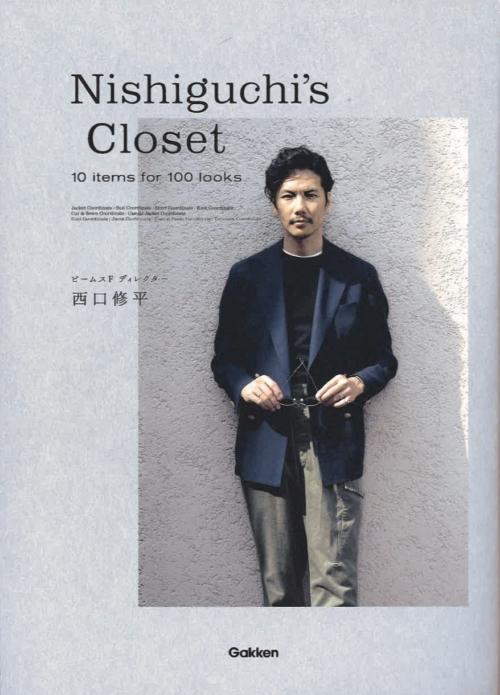
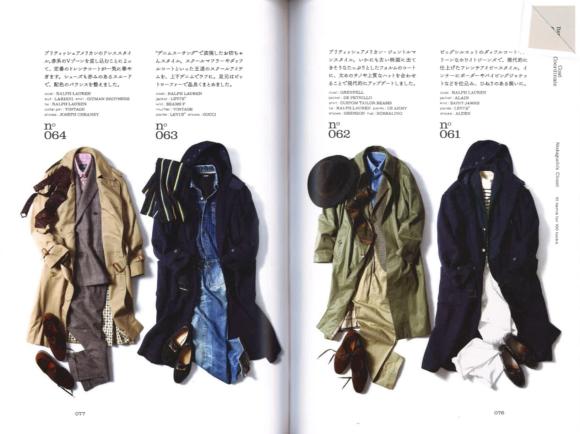
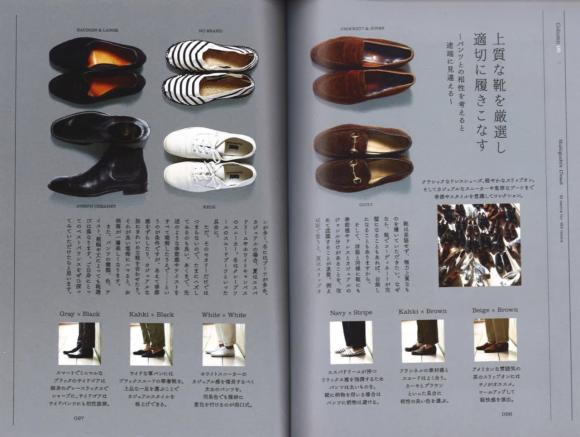
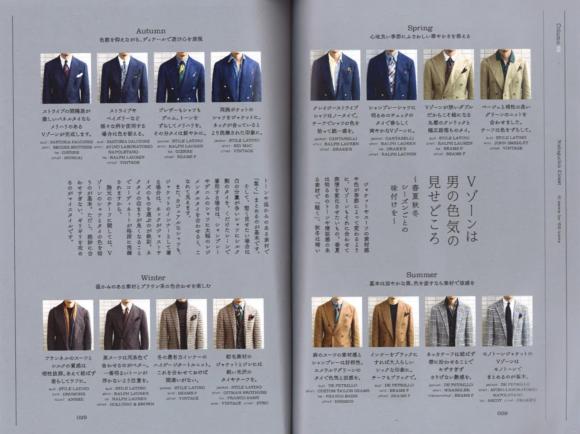
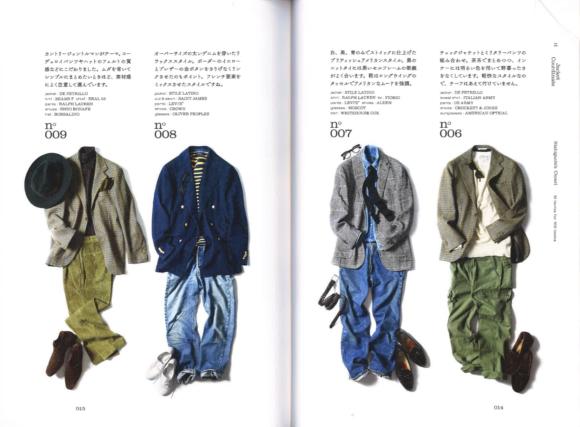
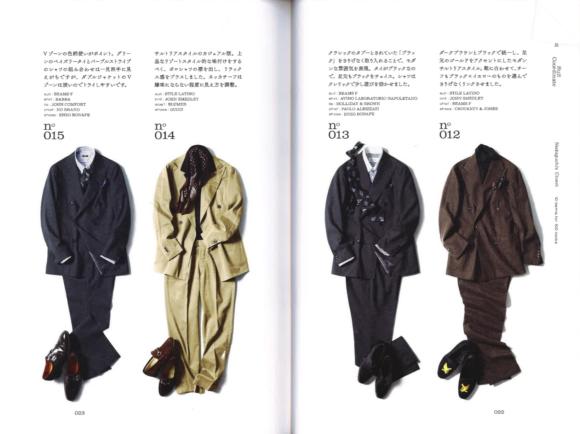
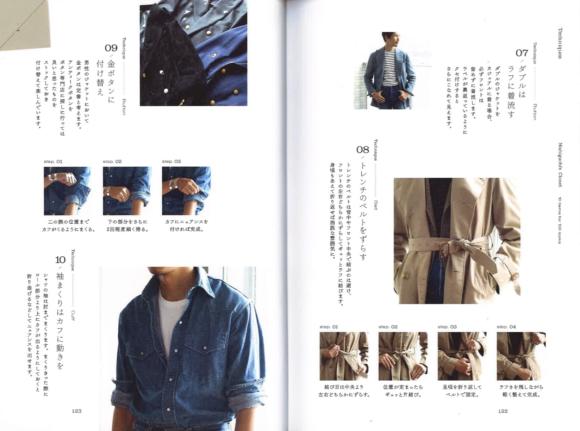
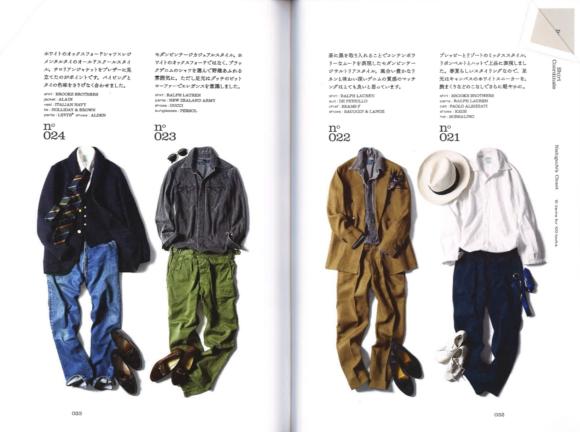
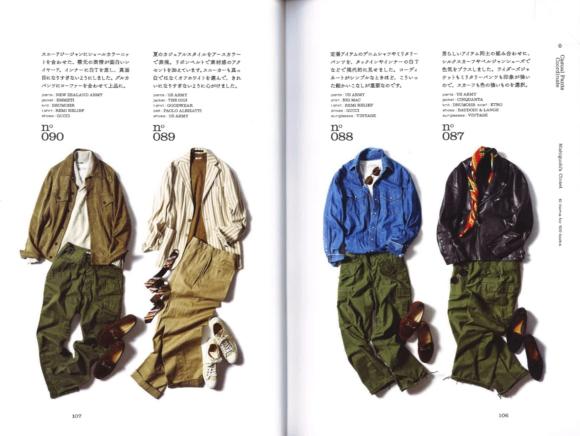
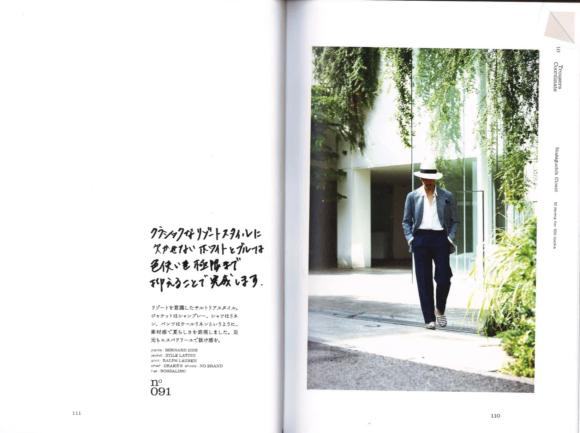


























Morning Simon
I have long admired Shuhei’s approach to dressing, and congratulate you for bringing this to a wider audience in the UK.
It’s also refreshing to read that you like an outfit here that features blue trousers, as you have on many occasions over the years opined that it is not a good colour for odd trousers.
We all have the capacity to learn and adapt.
Hi Martin,
Thanks, I’m really pleased. I hope you enjoy the book.
On navy trousers, yes I have said that I think they generally make a poor choice for an odd trouser, but not that they never work – just that the things they work with a pretty restrictive. We went into that in some detail on the recent post here – where I set out the places I think it can work.
So sorry, although I certainly change my mind on some things, I haven’t on navy trousers!
I didn’t say it was nice to see you’ve changed your mind; I simply said it was nice to see you saying you like an outfit that features blue trousers as you have regularly said you don’t think they work.
Thanks.
Sorry, I thought was what you meant by learn and adapt.
I do think they work Martin, just only in narrow circumstances – which is why I wouldn’t generally recommend them for anyone that’s putting together a wardrobe of odd trousers.
I think the trick with Nishiguchi-san’s navy trousers is that it is a cotton/linen blend, a brighter blue (but still not shiny due to the fabric) with quite a loose silhouette. It looks nothing like an orphaned suit trousers. It also works well in summer where you often find yourself too hot to wear a jacket, or where the jacket is of a light color (light blue, cream/oatmeal, even a light grey works well.) Have a similar, albeit much cheaper and casual, one and it’s so easy to pair casually as well! Looks amazing with a white shirt as Nishiguchi-San himself often wears with.
Good point on not wearing a jacket in particular Michelle. That makes everything a lot easier
Dear Simon,
I have a question that is not entirely related to the above. Some fabrics like tweeds have more stretch, while others like a hopsack have less. Do you add more back width to a jacket that has less stretch?
Thanks a lot!
Not usually, no. Only in extreme circumstances, such as with cottons, which usually have none at all.
I’m more likely to add more in the back of a jacket to deal with layering pieces underneath it, or perhaps if you want a summer jacket to fit a little looser so it lets air through more (thought that might be a little more in the waist than the back)
Fantastic ! The idea is genius … …10 items .
In a world of less is more , we need more of this (excuse the oxymoron)
Just love the way clothes are photographed as if ‘thrown together’.
I’d never heard of the guy but he’ll be on my instagram now.
On a general point what is it about Japanese culture that they do this sort of thing so well ?
Thank you Simon , you’ve widened by sphere of interest
Cheers Robin.
On the reason the Japanese do this so well, it speaks to a level of precision and detail-orientation, which comes out in many areas of the culture.
As I mentioned in the article, the way the Japanese took on US styles of dress after the occupation, and became obsessed with styling those faithfully as well as recreating the clothing, reflects the same tendency.
You only need to look at the RWC to see how Japanese culture is based around order and respect.
Great, love that Americana sort of thing thats going through his style. ..
Not sure if something like that would work on a tall European guy like me. Whether something works or not has so much to do with the build of the person. Of course you know that.. Japanse can pull some of these things of in a way nobody else can. The colour and material combinations are inspiaring. I would love to buy the book but the shipping is pretty expensive. The book is 25 and the shipping 14,50. Not much to do about that I guess. Thanks for the post again Simon. Cheers
Hey Jasper,
No sorry – our aim is always to be transparent, and that’s what shipping with a courier costs. We could charge more for the book and then claim we were just giving away free shipping, but we prefer to be a bit more honest.
Pleased you like the looks. I actually think height would help a lot with some of these – Shuhei likes long coats, for example.
Hi Simon – I am not sure if I agree with the rationale of defending this approach because it is honest. I think it is just a pricing decision (which, in this case, I think is perfectly valid and I am not criticising it in any way). For instance, You could equally define a fixed price based on your usual volume of sales to different geographical regions. In this way you could offer the same price to all your readers independently of where they are based. This approach would be riskier and probably would require a higher margin but, if disclosed, is not less honest.
I remember that some months ago Private White modified for a while their pricing structure. They claimed that they were no longer planning to have sales because all their items were fairly priced. All the discourse behind this was honesty. I never liked that approach, perhaps because I cannot afford fully priced Private White jackets. Luckily they have now decided to come back to the traditional retail model, in which some people decide to pay a premium to buy the item that they want when they want it. Other people, like me, are willing to get an item from a more limited selection of products, and during some constrained windows, with the reward of a monetary benefit. I do not think that this approach is in any way deceitful. I could even argue that it is more inclusive!
Apologies if my comment comes across as pedantic, it is in no way my intention. I am actually a longtime fan of the high quality of the content you create.
Hi Diego,
You’re right on the first point, that wouldn’t be any less honest. I think it would just fall down a little on being fair. If someone paid the same postage whether they lived in Australia or a few miles away in London.
And on the second, an approach that includes sales isn’t necessarily less honest. But it often is – brands would never admit that having that approach means they have to charge more for the fully priced items, in order to afford to be able to offload things that don’t sell, in the sale.
I do understand how it’s appealing to have the opportunity to buy things in a sale. But personally, I would rather the price was more standardised and in that way transparent. It means I have more confidence in knowing the value I am getting.
Thanks for your thoughts- it’s a really interesting area
I don’t quite get in what sense these looks use just 10 items (as it says on the cover)? Or is just the “main” item e.g., jacket or coat? But even that doesn’t seem to work as in the more casual outfits in the last few images there are quite a few new casual jackets that haven’t featured earlier and definitely take the total over 10.
No, it’s a rather loose interpretation of that concept. Combinations centre around those pieces, but they don’t only include those
Well, I guess I have time to learn Japanese in order to fully enjoy the book.
Just read this, then clicked your link to purchase the book, but you’re out of stock. When might you have them again? Any idea?
Yes, we actually just ordered a second batch, which should be here in a week.
We are taking pre-orders on those books now – so go ahead and place your order, and it will be shipped out when they arrive.
Cheers
One of the interesting things about about our Japanese brethren is how, with their slight builds they defy the ‘baggy trouser’ rule.
Put these strides on a flaneur with a bigger frame and they’d look ridiculous but the slim, slight framed often vertically challenged Asian sartorialist pulls it off.
Hi Simon,
Thanks for your initiative and this instructive post.
So this man’s name is Shuhei Nishigushi! Eventually, I can pin a name on this Japanese face I’ve seen many times over the past years, since I started reading PS, perhaps.
The first time I saw his pic posted on instagram, If I remember, I was struck by two things: the way he pulled off his béret basque and the style exhibited by his whole outfit.
Nb: do you remember, Simon, your post that led us in the comments to digress onto bérets basques? I made a comment on that occasion in which I mentioned chic Parisian women and style conscious Japanese men among others as béret wearers. I had Shuhei among others in mind when I refered to Japan. But even in that group he really stands out by the way he wears his! Keep his name in mind if you plan a post on the subject “béret basque and style”. He might be of some help.
As to his style itself, I think it’s specific to him, even though, one can pick a combination here and there. But to envision emulating the way he dresses is quite impossible. Frankly, beyond Shuhei, how could one emulate Gay Talese, Ethan Desu or Alexander Kraft, to name a few?
The lesson: it behooves each one to strike his own path and construct his own style.
An aside query, Simon: is there an equivalent of PS for women?
Thanks for your help.
John
Thanks John, and good point on berets.
No, there is no PS equivalent for women. But given the number of people that have asked over the years, you would have thought someone would have started one by now!
Female readers (all 7% of you) do tell us if you know any.
I’d love a PS equivalent for women, although I doubt any will ever exist. The reason is simple: classic mens fashion is the same regardless of body type and age. Although one might introduce slight tweaks (e.g., shorter men might opt to have their sports coats shorter in length and with lower buttoning points, and might prefer overcoats that end slightly above the knee rather than below the knee), men tend to wear sports coats and suits and shirts regardless of body type.
An 8 year old boy, an 18 year old man, a 50 year old man, and a 75 year old man would all look fine wearing a navy suit at wedding. In contrast, an 8 year old girl might wear a velvet dress with patent Mary Jane shoes and ankle socks; an 18 year old woman might wear a cocktail dress and strappy heels; a 50 year old woman might wear a pant suit with closed-toed heels; etc. Conversely, an 18 year old woman would never wear ankle socks and Mary Jane shoes, just as an 8 year old girl would look inappropriate in a cocktail dress and 3 inch pumps. Leaving aside age, a long-waisted woman with short legs will wear very different outfits from a short-waisted woman with long legs; a woman with a small bust and a woman with a large bust will also make different choices, etc.
Saw this book on sell at Kinokuniya’s Sydney store, now that I have seen a preview here I am tempted to purchase it and put it along side your Sartorial Travel Guide, Thanks.
Wednesday ordered, Friday delivered here in Germany! Awesome service! Great reading for the weekend!
Simon, Do you have an idea where to buy army chinos as pictured in the book?
Cheers
Christopher
Most good vintage stores – though you might have to look for a while before you find a fit that works for you
Hi Simon
How do I preorder this book I will like to be added to the list.
Cheers
Chuck
The pre-order for the second batch has also now sold out. We will update the page, and everyone, when we know we can get another batch in.
Thanks
The book arrived today, very happy with it.
You told us that it is in Japanese but maybe there is somebody here who will translate the text into english?
It is not anovel but might give hugh extra value to the book.
Enjoy eastern anyway ;-))
Nice idea – do let us know if there are any volunteers!
Hi Simon
I have the book and understands Japanese. I have also done Japanese to English translations in the past. Maybe I can help?
That would be lovely. Email me at [email protected] to discuss, if you would like
Dear Simon,
the book is really great, but is there any option to get some parts translated?
Cheers Christopher
Oh good.
Not that I have access to – though a reader did ask for a volunteer from any other readers than speak Japanese!
Any word re potential translation?
No, sorry
I received my copy a few days ago and had a chance to go through it during some down time today. I loved it, lots of wonderful inspiration within. Thank you so much for sourcing this for us all. It will have a special place between “Dressing the Man” by Flusser and “Gentleman” by Roetzel on my book shelf (and right by your two publications, I might add).
I would also like to take this opportunity to thank you for all the wonderful that work you do. Between your site and the The Rake magazine, I have some hope for the future.
Oh good, thank Kostas, that’s lovely to hear on both counts
Simon,
One of the things that has fascinated me about Shuhei Nishiguchi’s photos is how he can wear a leather motorcycle jacket – a heavy rough utilitarian piece – and somehow look so elegant in it as though he were wearing tailored clothes. When I wear a biker jacket I seem to risk looking rather more like a hooligan. Why does this look “work” for him? Is it the cut of the jacket? The way he combines it with softer casual wear? The fit? Or just some Nishiguchi voodoo 😉 ?
I’d love to hear your thoughts on how Mr. Nishiguchi wears a double rider leather motorcycle jacket and why it works so well for him.
Cheers,
Seth
Hey Seth,
I think it’s an extension of high/low dressing – have a look at that piece if you haven’t before.
It helps that the jacket is a classic menswear piece, and that he wears it often with relatively simple things elsewhere. See also my thoughts on wearing a biker jacket here. I’m doing something different there – not aiming for the deliberate contrast of high/low, but rather making the jacket stand out relatively little with subtle things alongside it.
S
Checked a few weeks ago and it was sold out on the PS Shop, but then happened upon the only copy at my local Kinokuniya in Austin, Texas of all places! The outfits do tend to lean a bit “fashiony” as you said, but the color and pattern combinations are inspiring nonetheless.
Nice to hear David. We do have it back in stock now, just in case anyone else wants to know